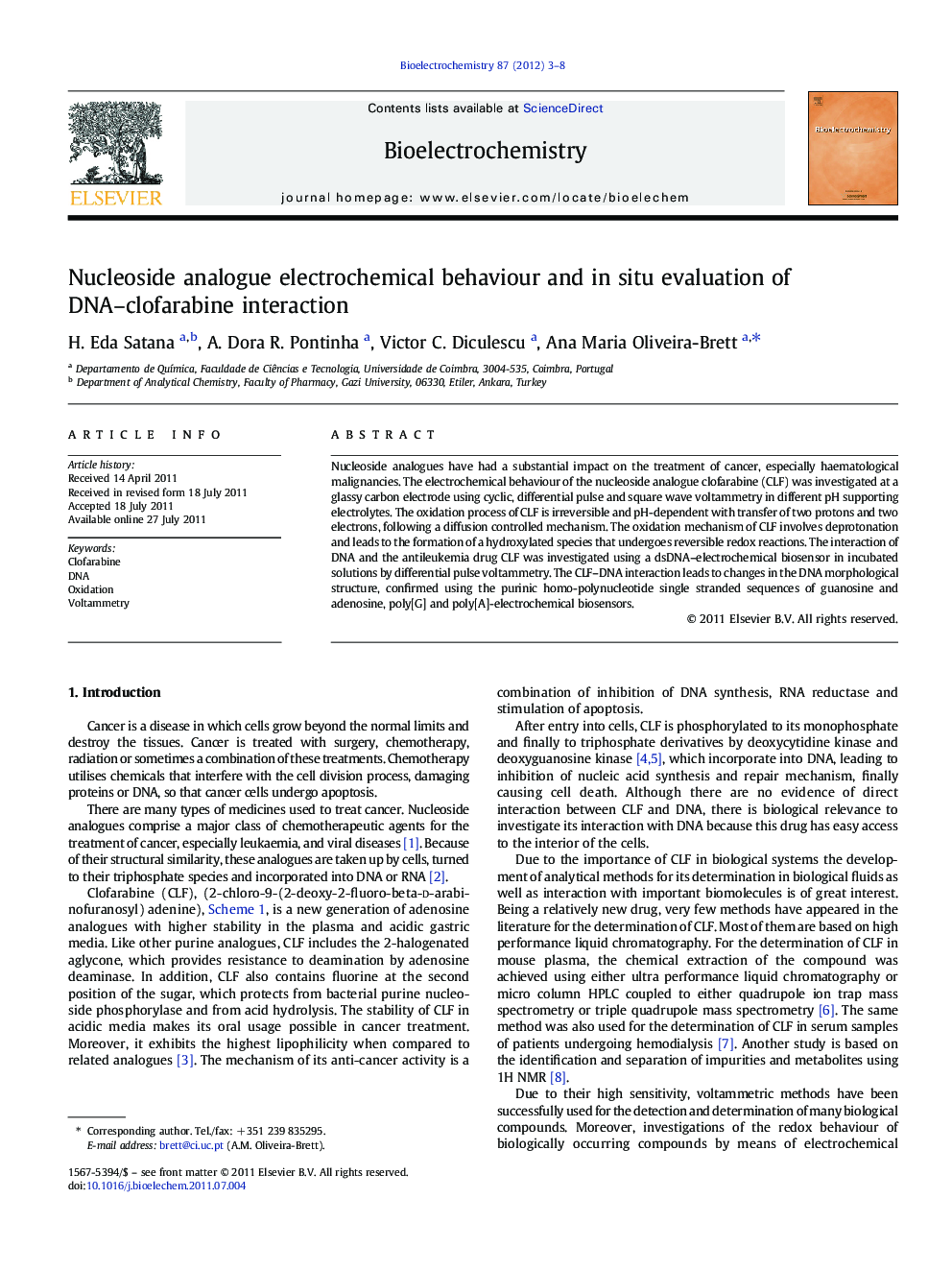| Article ID | Journal | Published Year | Pages | File Type |
|---|---|---|---|---|
| 1274429 | Bioelectrochemistry | 2012 | 6 Pages |
Nucleoside analogues have had a substantial impact on the treatment of cancer, especially haematological malignancies. The electrochemical behaviour of the nucleoside analogue clofarabine (CLF) was investigated at a glassy carbon electrode using cyclic, differential pulse and square wave voltammetry in different pH supporting electrolytes. The oxidation process of CLF is irreversible and pH-dependent with transfer of two protons and two electrons, following a diffusion controlled mechanism. The oxidation mechanism of CLF involves deprotonation and leads to the formation of a hydroxylated species that undergoes reversible redox reactions. The interaction of DNA and the antileukemia drug CLF was investigated using a dsDNA–electrochemical biosensor in incubated solutions by differential pulse voltammetry. The CLF–DNA interaction leads to changes in the DNA morphological structure, confirmed using the purinic homo-polynucleotide single stranded sequences of guanosine and adenosine, poly[G] and poly[A]-electrochemical biosensors.
► Clarify clofarabine electrochemical behaviour. ► Propose an oxidation mechanism for the nucleoside analogue. ► In situ evaluation of DNA-clofarabine interaction.
